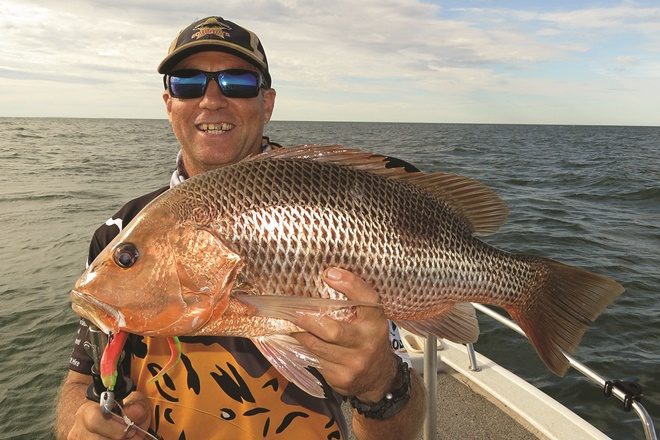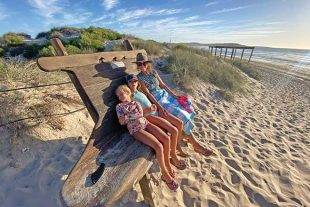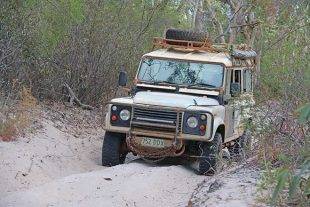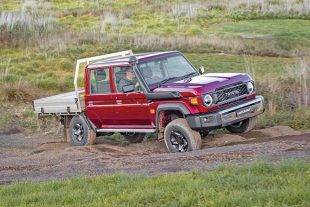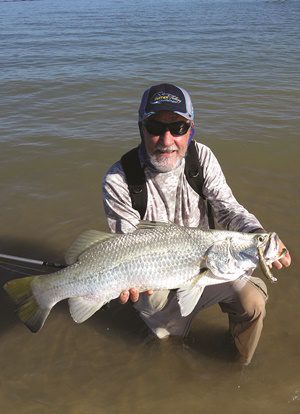
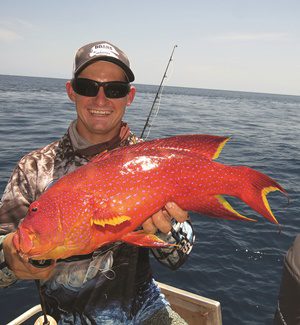
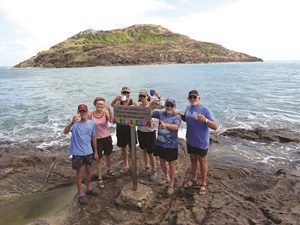
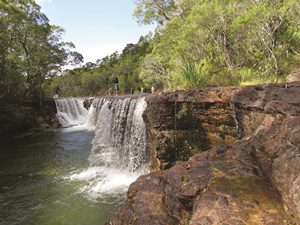
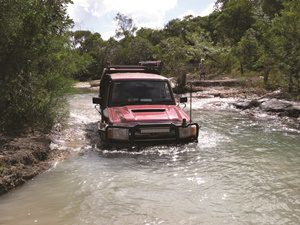
MOST Aussies would have a trip to Cape York near the top of their bucket list.
As a bloke who has had the privilege of living there since the late 1980s, I have plenty of first-hand knowledge of what the attractions are and understand exactly why the Cape is such an icon in our national psyche. Even in these modern times, the place is still looked on as the ‘wild frontier’, but to us ‘locals’ our backyard has changed substantially over the past couple of decades. To get some idea of how much land we’re talking about, Cape York Peninsula extends from Cooktown north to Bamaga and west to Karumba, an area that is larger than the whole of Victoria.
Locals don’t talk in kilometres (or hundreds of kays), they express distance in driving times – durations that can change considerably depending on the state of the roads to be travelled. In optimum dry season conditions, Cairns to Weipa takes 11 to 12 hours, Cairns to Bamaga 18 to 20. At the height of the wet season, from January to March, the main highway, the Peninsula Development Road, is more often than not impassable.
Many travellers who choose to drive the Cape totally underestimate the distances and times involved. I remember taking a phone call when I lived at Punsand Bay Safari Lodge at about 9.30am one day. “We’re just leaving Cairns, can you book us in for the next two nights?”
“Umm, well, it’s an 18-hour drive – maybe you should start from tomorrow night!”
“Oh, we’ve only allowed three days up and back – we’ll have to reorganise our itinerary.”
They didn’t show!
That said, the road situation is changing rapidly, with bitumen extending all the way to Laura these days and less than 80km of dirt remaining in the next stretch up to Musgrave. From the roadhouse north, regular stretches of tar are interspersed with gravel stretches to allow faster vehicles passing opportunities. Fitting a quality CB radio is recommended because it allows drivers to communicate with trucks and vehicles towing trailers so that passing opportunities on the dirt stretches can be completed safely. Driving with lights on, particularly on the gravel, is essential.
Most of the Cape’s visitors drive themselves up in the months from June until September and that traffic quickly generates plenty of corrugations on the gravel stretches. It’s also the time when the trade winds can blow for weeks on end, making any fishing excursions on the east coast very unproductive. However, get a break in the wind and things can improve very quickly, but such events are rare and unpredictable.
Weipa locals wait for the light wind period known as the doldrums that usually precedes the wet season to sample the fantastic offshore fishing in that area. All the ‘tourists’ have gone by that time!
Camper trailers have become increasingly popular with visitors over the past decade, but as the road improves, the number of caravans making the trip is also on the rise. The new-generation of off-road or semi off-road models have given visitors a more reliable van to tackle the inevitable corrugations and numerous ‘dips’, but care must always be taken to drive according to the road conditions. Navigating gravel roads requires constant attention. Hit one bad washout or bulldust hole with too much speed and your trip could turn pear-shaped very quickly.
Those who choose to tow a boat should take extra care. Make sure the wheels, tyres, axles and springs are in first-class condition and all wheel bearings repacked before the trip. Get the motor serviced, cover the powerhead in heavy-duty cling wrap, put the cowl back on and fit an engine sock. Protect the hull from dust and stone chips with a boat cover or screens. Most importantly, take your time! I’ve towed several fibreglass boats up to 6m long to Weipa and that trip has taken up to 14 hours from Cairns.
Several popular fishing destinations are on the Cape, some much easier to reach than others. Cooktown, Karumba and Weipa are probably the most popular, while places like Kowanyama, Lockhart River and Bamaga are also well worth a visit. From Cairns, the tar now extends all the way to Cooktown and Karumba and this makes them much more appealing, but also more crowded. Weipa is expected to have bitumen all the way by 2022!
If you are travelling and camping on a Cape trip, make sure you check out the alcohol restrictions that apply to most indigenous communities because heavy fines can occur if limits are exceeded. Quite a few of the camping areas are within national parks and these must be booked electronically before you leave. Rangers cannot issue camping permits on the spot. Check out the Tourism Cape York website or Facebook page for more information.
Seasonal rains and run-off are another limiting factor and can close the road any time between December and April. Given that the optimum fishing times are in April, May, September and October, the logistics of planning a fishing trip to areas like Weipa and Bamaga can depend very much on the time of year. Strong southeasterly trade winds are very common during the dry season from June to September, so heading to the west coast at this time is advisable because the breezes blow offshore.
With wet season road closures sometimes extending into late April and beyond, those fishers who want to visit at peak season and beat the ‘crowds’ to places like Weipa and Bamaga have another interesting option. Shipping company Sea Swift operates a weekly service to Thursday Island, Bamaga and Weipa, so you could ship your boat and vehicle from Cairns while you take the local QantasLink flight. To make this a value for money proposition, most parties opt to stay and fish for at least a couple of weeks before driving back out when the road is passable.
Tent and cabin accommodation is readily available at these locations. Those who are time poor or want to give themselves a treat have other fishing choices to consider. These range from leaving your own boat at home and hiring a suitable craft at your destination right through to going all out and hiring a guide. A number of well-maintained hire boats are available in Weipa and Bamaga. Cape York Ice and Tackle at New Mapoon and the Weipa Camping Ground are just two that have good-quality hire craft but make sure to book well ahead because they can be hard to come by at peak times.
Parties of six to 10 fishers wanting to do their own thing should look no further than Weipa Houseboats. Steve Rehn provides on-ground service from the airport as well as hiring fishing dinghy tenders. Those wanting to hire a professional guide at Weipa have one of the largest, best-equipped fleets in the state to choose from, but you definitely need to book any trips well in advance.
As a charter operator for over 20 years, I’m a bit biased, but would suggest that hiring a reputable guide can be a very good investment indeed. Four to six-day trips are the norm, with single-day excursions only available at short notice. At the deluxe end of the scale, mother ships are definitely the way to go! Eclipse Charters, for instance, has just formed a co-operative arrangement with some of the Gulf’s best guides from Weipa Sports Fishing.
Having experienced their hospitality first-hand, I would rate them at the very top of fishing experiences in Australia – and at a cost below similar operations in other states. But again, I can’t stress enough the need to book early!
While mountains of info about the Cape is on Facebook and the internet in general, there’s no substitute for experiencing the place in real time. Every traveller, be they local or visitor, has their Cape story. People like myself have enough to write a book!
Take the time – no, bloody make the time – to see the pointy end of Oz. It’s something every true-blue Aussie must do as a rite of passage!
See you around the rivers one day soon!
 Bush 'n Beach Fishing Magazine Location reports & tips for fishing, boating, camping, kayaking, 4WDing in Queensland and Northern NSW
Bush 'n Beach Fishing Magazine Location reports & tips for fishing, boating, camping, kayaking, 4WDing in Queensland and Northern NSW

